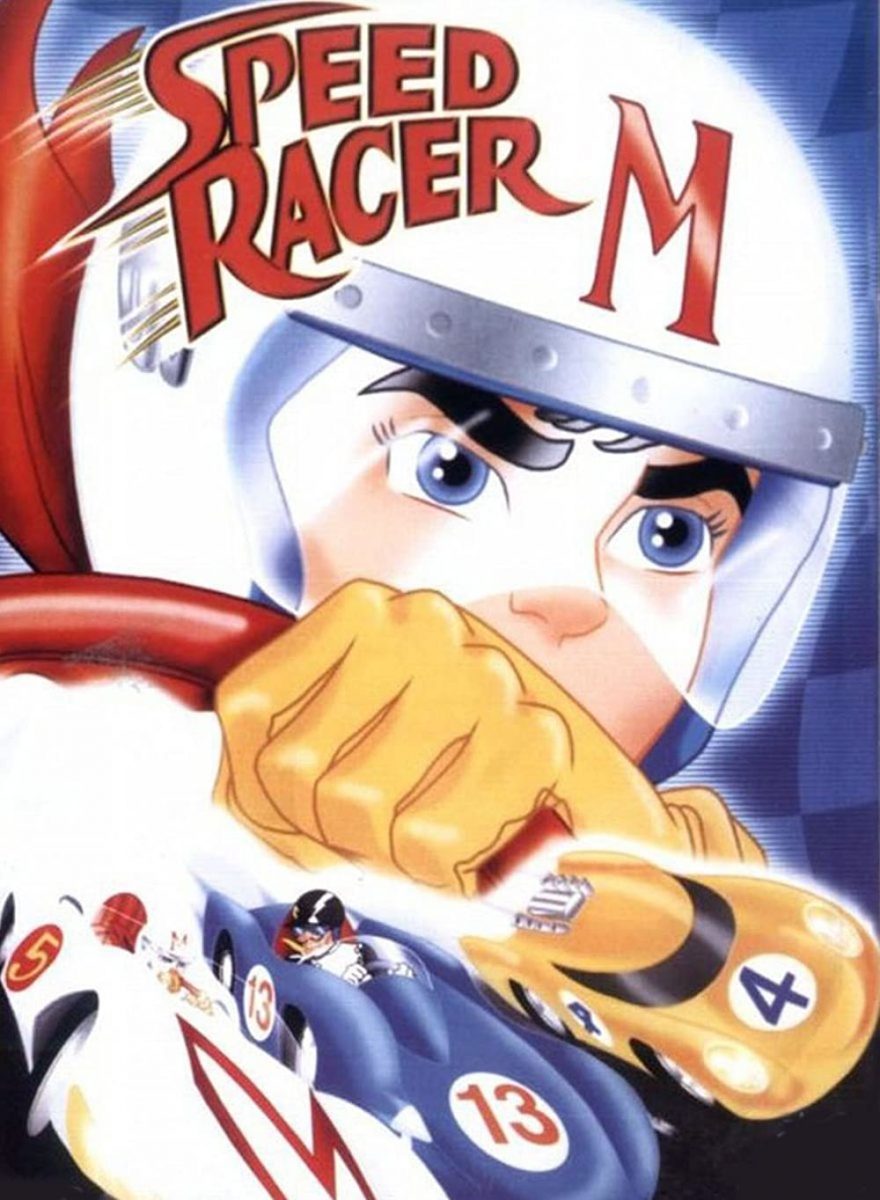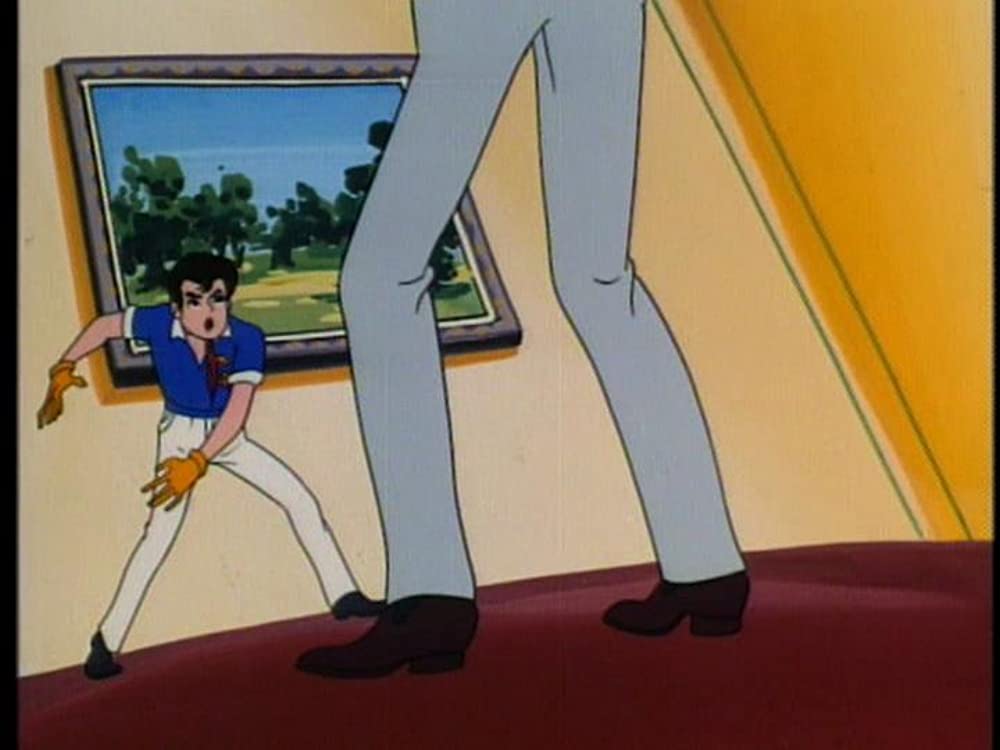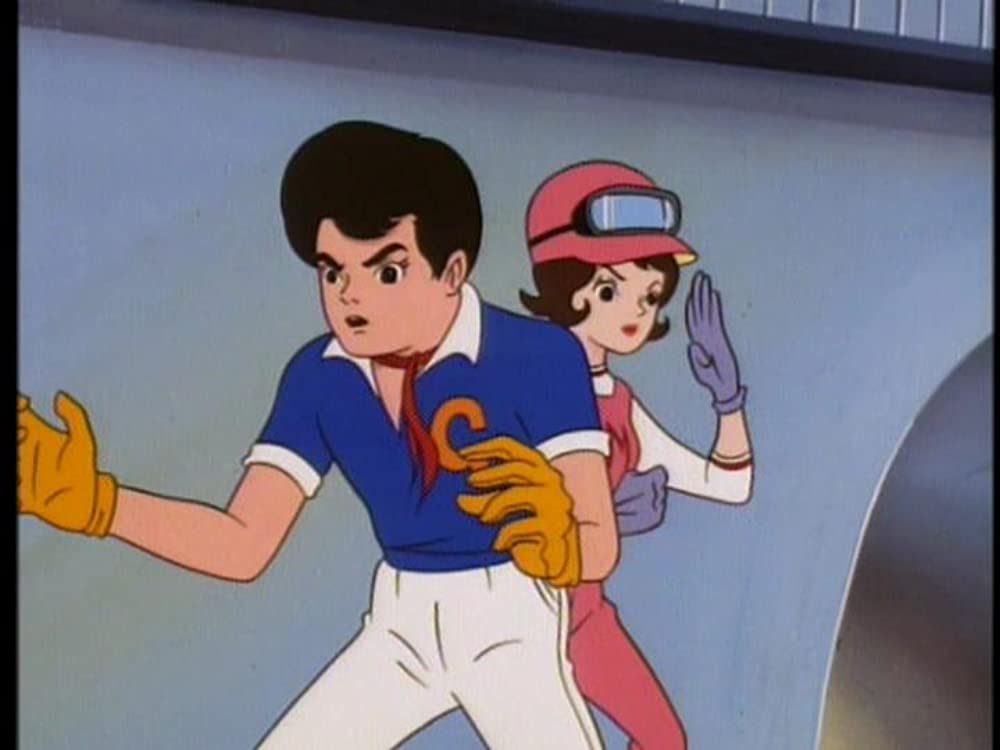When it comes to old anime, the temptation’s there to wax nostalgically about the good old days. Similarly, you’d be inclined to think that the source material for bad film adaptations is bound to be better. Given how the live-action Speed Racer (2008) movie turned out, for better or worse, surely the show it’s based off had to be superior. In practice, when the nostalgia filter comes off, the 1967-68 series hasn’t aged all that gracefully, despite its significance.

Based on Tatsuo Yoshida’s manga Mach Go Go Go! (1966-68), the series was animated by the studio he co-founded, Tatsunoko Production. The 52-episode run’s also notable for being one of the very first TV anime to be distributed across the Pacific, through tech company Trans-Lux, but also to air roughly around the same time as it’s Japanese counterpart. It went on to solidify the reputation of the animators, spawn a successful franchise, and at its peak in the 1960s-70s, was viewed by around 40 million in America alone.
VHS recording of the anime’s English intro, as it was originally broadcast in 1967, showing the now-iconic Mach 5. (Source: YouTube)
No doubt the anime’s impact in the history of fandom, and pop culture at large, in the West remains felt to this day, however far removed that can seem. Yet is it worth checking out today? You may not like what you’d find, though it’s no less interesting.
A Demon on Wheels
Inspired by various automobile-themed manga popular in the ‘60s, especially Yoshida’s own Pilot Ace (1962-64), Speed Racer followed the exploits of the titular hero Speed Racer (Katsuji Mori, Peter Fernandez). With the help of his loving family, the ever-reliable Trixie/Michi Shimura (Yoshiko Matsuo, Michiko Nomura, Corinne Orr), the enigmatic anti-hero Racer X/Masked Racer (Kinya Aikawa, Peter Fernandez), and the famous Mach 5, this ambitious young man will not let anything or anyone stand in his way of becoming the best professional racecar driver he can be.

It’s not the most intricate plot out there, and it doesn’t try to be. Given how the anime also took elements from classic James Bond films from the time, such as Goldfinger (1964), the various story arcs don’t really concern themselves with realism. One moment could be about Trixie sneaking in and stumbling on saboteurs trying to cheat a rally, while another can have Speed gunning down an army of slavers. This doesn’t shake off the “race/challenger of the week” vibe, especially when the Mach 5 seems to have a feature for just about any situation. You could even watch most episodes out of order and not miss anything. Such wacky hijinks, however, certainly make the “demon on wheels” quip in the theme song’s lyrics a hilarious meaning, which became the stuff of memes.
Amidst the wackiness, the main cast is given as much focus as the actual racing. While there’s not much in the way of character development, you get to see different sides of the protagonist, be it his loving relationship with his family, or an impulsive tendency to jump into the fray without hesitation. Meanwhile, there are more than a few moments that focus on mechanic/love interest Trixie, and even the elusive Racer X in his own missions, given the masked man’s true identity as Speed’s long-lost brother. The same can’t quite be said of the one-off villains, which can range from mobsters to a madman with delusions of Egyptian grandeur. The exception, though, being arch-rival Captain Terror and his “Car Acrobatic Team”, the latter often serving as convenient cannon fodder.

You may notice, however, how thoroughly Americanized the anime is, such that some might think it was made in the West. This could be pinned on how the show was also among the first to be localized for US audiences, and it shows. Every single character, as well as the Mach 5 (originally known as the Mahha Gō), was renamed. This means that some of the original symbolism and references, like Speed’s original name (Gō Mifune) being a nod to film star Toshiro Mifune, are completely lost. Yet weirdly, the original broadcast preserved just about everything else intact, including the ludicrous violence. Whether this was due to the popularity of gritty adventure cartoons like Johnny Quest (1964-65), or the lack of any real precedent on localizing Japanese media for TV, as brought up by MercuryFalcon, it nonetheless allowed Americans to have almost the same quality experience Japanese fans had. A feat that wouldn’t be repeated until much later.
Running on Fumes
For all its nostalgic value, Speed Racer’s visuals sadly don’t hold up. As one of Tatsunoko Production’s earliest works, you could almost taste the lack of polish and cut corners. Movement can be janky, scenes are often recycled, and off-model errors are relatively common, among others. These can make some of the hijinks on-screen look even more surreal, if not laughably bad. At the same time, however, there’s a charm that still manages to slip through the ages. Whether it’s the Mach 5 leaving other cars in the dirt, or Speed battling insurmountable odds, the imagery at its best brings the ‘60s manga style to vivid life. Alas, watching it in the 2020s doesn’t quite match up with childhood memories, nor with the reputation it garnered.
In more recent years, the show found a new afterlife as a source of both ironic and affectionate memes, in spite or perhaps because of its dated campiness. (Source: YouTube)
Then, there’s the audio. The show’s theme song and leitmotif, be it the familiar Western version or Noboyuki Koshibe’s bombastic original, remain as catchy now as they were back then, overshadowing the rest of the jazzy soundtrack. While the Japanese dub is decent for the era, the English voice-acting is legendary for both its campiness and sheer weirdness. This could be partly attributed to the localization, with the late writer-director Peter Fernandez (who also voiced Speed) being creative in enthusiastically having the script match the lip-sync. Though this made it seem as though the cast was also in a race to cram as much exposition and dialogue as possible – which influenced how anime would be perceived by Americans for decades after – the end result is something unique that captures that pivotal moment in time, while managing to hold up better than the accompanying visuals.
The show’s staying power proved strong enough to become a household item by the 1970s, in spite of the malaise faced by other cartoons on TV during that decade. By the time ownership of the series’ rights reverted back to Tatsunoko Production retroactively in 2014, it had spawned merchandise, re-releases of episodes pulled from syndication, and various spin-offs and sequels made by Western creators, including the 2008 live-action film. While its heyday is long past, few can deny its historic significance in both Japan and the US.
Another Speed Racer legacy can be found in the various US-exclusive entries based on the series, long after the original show had faded in popularity. (Source: YouTube)
Yet all that said, unless you’re willing to tolerate its wrinkles, this is one racecar that’s running on fumes. There’s still some mileage left in there, but it’s another reminder that sometimes, the nostalgia filter isn’t always so reliable.














